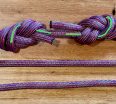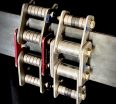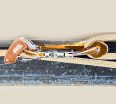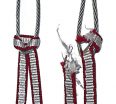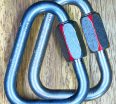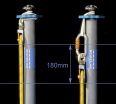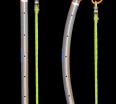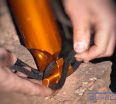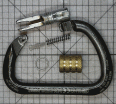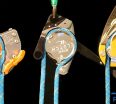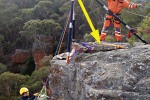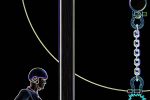Guy Tensioning Systems
There are many ways to tension the guy lines and anchor legs we use in our systems but I’d like to present the one I use most.
I will start by mentioning that this works best with very low-stretch cords. For example, cords with cores made from Technora or Dyneema as opposed to standard polyamide (nylon). The reason for this is that once my anchor or high directional point is set in place, I want to minimise any system movement once the load is applied.
This first video shows the method I use. Take particular note of the significance of the round-turn and its role in holding tension during the application of successive vector pulls.
I have tested this configuration here in a RopeLab Members’ Report. I typically count on a strength of 10kN per strand with the Sterling 6mm PowerCord used here.
Set-of-fours
Many people opt to use a set-of-fours for guying. By increasing the number of strands, we may be able to use skinnier cord. We may also be able to increase the tension reached.
Many people opt to use a pulley based set-of-fours for guying, however it is my strong preference to keep this valuable resource out of the system and on standby for other situations. The pulley based set-of-fours is almost without parallel when it comes to dealing with unforeseen issues in loaded rope systems.
I’d like to propose that it is far simpler to use low-stretch cord for the majority of embedded uses such as anchoring and guying. This video shows one example of a budget set-of-fours made from low-stretch cord. This is the 5.4mm Sterling V-TX cord which has a Dyneema core and polyester sheath. It has an MBS of 14kN so with this knotted 4-strand configuration, it is stronger than the carabiners at each end.
The load cell shows that a single person with a one-handed grip can apply in excess of 2kN to the system. This configuration can also hold tension as it is secured and locked off. The final tension of 0.34kN, with low stretch cord, provides a rock-solid system for guying.
© Richard Delaney, RopeLab, 2016



